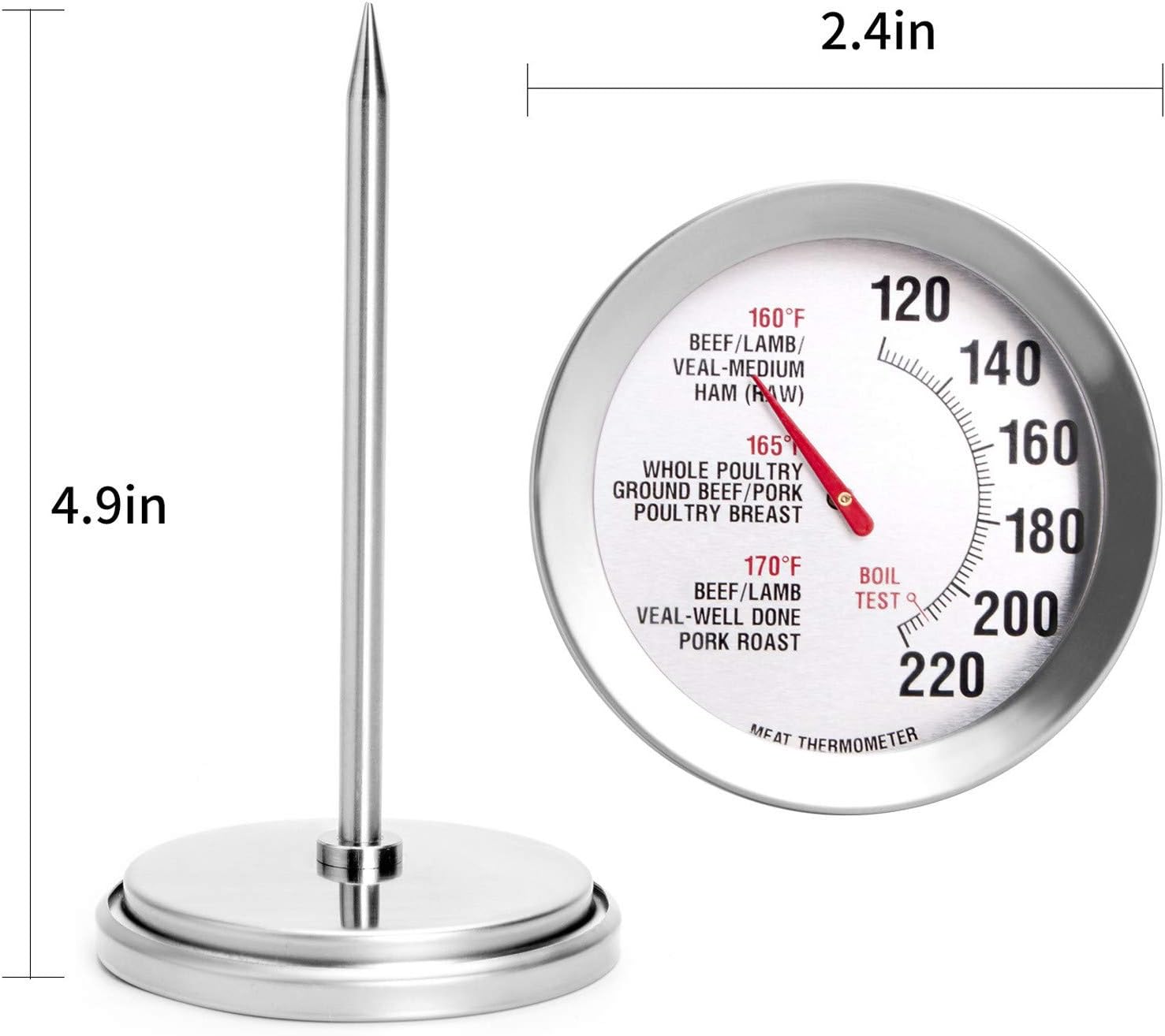Page Contents
- 1 Details: Roasting Meat Thermometer T731 Oven Safe Large 2.5-Inch Easy-Read Face QC1
- 2 Advantages
- 3 Notice
- 4 Buyer Guide meat thermometer
- 5 How to choose meat thermometer
- 6 How to maintain meat thermometer
- 7 Review MEIYIN Waterproof Thermometer Hybrid Probe Replacement for Digital Cooking Food Meat Thermome...
- 8 Review Meat Thermometer, Digital Food Cooking Thermometer, Waterproof Ultra Fast with Collapsible Lo...
- 9 Review Bundle - Marnso Digital Meat Thermometer and 22lbs Kitchen Food Scale Weight Grams and Oz
- 10 Review Digital Meat Thermometer Instant Read/waterproof/with Magnetic Base/Foldable/Pocket Size Meat...
Details: Roasting Meat Thermometer T731 Oven Safe Large 2.5-Inch Easy-Read Face QC1
Brand: Cafuvv
Advantages
- Products can be returned
- Roasting’s Meat Thermometer accurately reads internal temperat
- ure to cook meat properly red moveable target temperature indi
- ator into thickest part of the meat without touching the
- one, slide red indicator to target temperatureHelps ensure foo
- d safety for roasting, grilling, rotisserie, and slow cooking
Notice
- Is an online purchase
- Delivery may be delayed in some areas.
Buyer Guide meat thermometer
If you’re shopping for a meat thermometer, this guide will give you all the information you need.- Type of thermometer needed. Meat thermometers can come in many types.
- Digital or Analog? Digital thermometers are more versatile. They allow you to monitor temperatures remotely from your smartphone. The downside is that digital thermometers cost around $30. Analog thermometers are cheaper, but you may need a meat probe to place in the meat.
- Room Temperature. If you plan on using your thermometer in your refrigerator or freezer, make sure the thermometer is accurate to 0?F. Otherwise, the thermometer may not give you accurate readings at all.
- Probe. A meat probe can be attached to your meat. The probe has a temperature probe that connects to the thermometer.
- Probe Size. Different probes have different diameters. The larger the probe, the thicker and more direct contact with your meat it will provide.
- Thermometer. Most meat thermometers come with 3 to 5 probes.
- Battery. Some thermometers use batteries. Some use an AC adapter.
- Cost. Most meat thermometers cost around $10-$30.
How to choose meat thermometer
When choosing a meat thermometer, it’s important to choose one that provides an accurate temperature reading. Many meat thermometers use internal probes to indicate the temperature of the meat.- Make sure the probe is long enough. Most meat thermometers come with probes that can measure the internal temperature of meat. However, if the probe is too short, it will pierce the meat and will not be able to accurately measure the temperature.
- Make sure the probe is flexible. Probes that arent flexible can pierce the meat, which can lead to inaccurate measurements.
- Make sure the probe doesnt have metal in it. Metal in the probe can cause inaccuracies due to the metals conductivity.
- Make sure the probe is easy to clean. Most meat thermometers will have probes that are dishwasher safe. However, if you have a small probe, it can be challenging to clean.
- Make sure the probe is long enough to reach the thickest part of the meat. Most meat thermometers come with probes that can reach up to 1.5 inches thick. However, if the probe is too short, it will pierce the meat and never reach the thickest part.
- Make sure the probe doesnt touch the bone. If the probe touches the bone, it can influence the reading.
- Make sure the probe doesnt touch a metal surface.
- Make sure the probe doesnt touch any source of heat.
- Make sure the probe doesnt touch the outside of the oven.
- Make sure the probe isnt based on a Fahrenheit measurement. Most meat thermometers use a Celsius measurement.
- Make sure the probe is 1?4 inch to 3?4 inch long. However, if the probe is too long, it will pierce the meat and not be able to accurately measure the inside temperature.
How to maintain meat thermometer
Unlike electronic devices, meat thermometers dont come with instructions. So, its important to know how to properly maintain and care for your meat thermometer to ensure that it works properly every time you use it.
There are three important things you can do to maintain and care for your meat thermometer:
- Clean it regularly: The probe that comes with your meat thermometer should be cleaned regularly, as well as the device itself. If your thermometer has removable parts, remove the detachable parts and clean them separately.
- Replace the probe: Over time, the probe of your meat thermometer can wear out and break, which can result in inaccurate measurements. If your probe becomes loose or breaks, replace your unit with a new one.
- Store it carefully: The probe of your meat thermometer should be stored in a cool, dry place when not in use. Some meat thermometers come with storage cases that help keep the probe protected.




